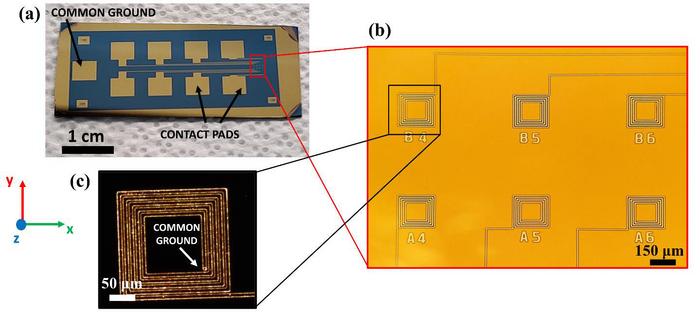Researchers from the University of Minnesota have developed a new approach to neural stimulation, a medical technique used to treat various illnesses affecting the nervous system, such as epilepsy, Parkinson’s disease, chronic pain, and some psychiatric illnesses. The team deployed an array of microscopic coils, called microcoils, to create a magnetic field and stimulate individual neurons with greater precision than existing devices.
Limitations of Current Neurostimulation Devices
While current neurostimulation devices are effective, they lack the necessary precision for certain applications, such as cochlear implants or vagus nerve stimulators. “There are several neurostimulation devices on the market – some are already FDA-approved for patient trials, some are pending approval,” said author Renata Saha. “But each of them has one caveat – they stimulate a large population of neurons, including neighboring cells that are not supposed to be stimulated.”
The researchers turned to magnetic coils of wire, harnessing the principle described by physicist Michael Faraday over two centuries ago: electric current running through a coil of wire can create a magnetic field. This magnetic field can then induce an electric field in nearby neurons, achieving the same effect as an electrode but with much greater precision. However, this technique requires extremely high current to achieve the desired threshold of electric field capable of stimulating neurons.
Microcoil Arrays and Soft Magnetic Materials Enhance Efficiency
To overcome the high current requirement, the team made two key improvements. First, they used an array of eight coils, which combined can induce electric fields using much less current per coil. Second, they employed soft magnetic materials at the core of the microcoils, which boost the magnetic strength of the coils without the need to increase the current.
The researchers constructed a prototype of their coil array, called MagPatch, and encapsulated it within a biocompatible coating. Testing the device with human neuroblastoma cells demonstrated its effectiveness, as the cells were affected by the magnetic fields without being harmed by the coating, suggesting the potential for clinical use. The authors plan to continue developing and testing the MagPatch device to ensure its safety and utility, with the hope of improving the next generation of cochlear implants.


